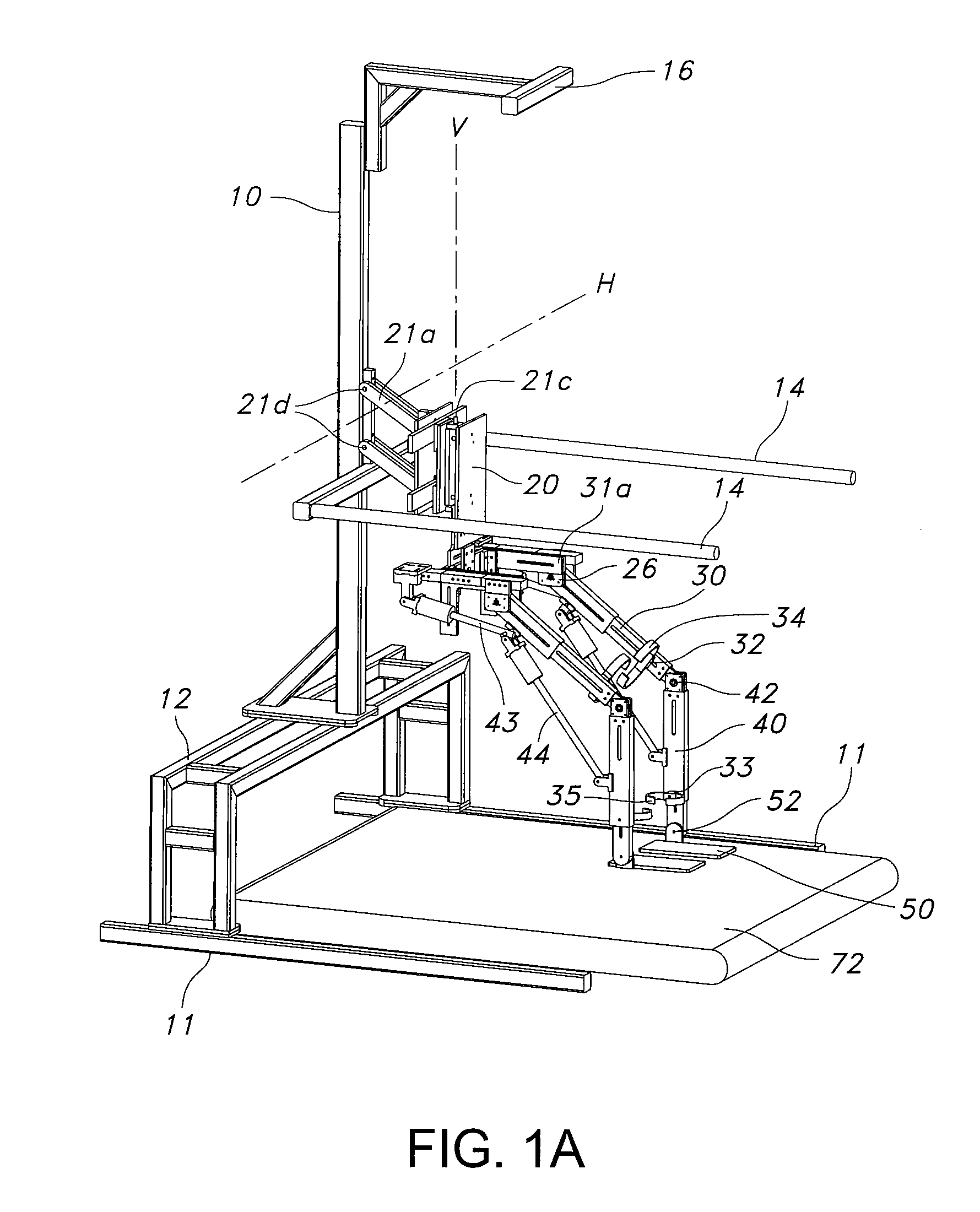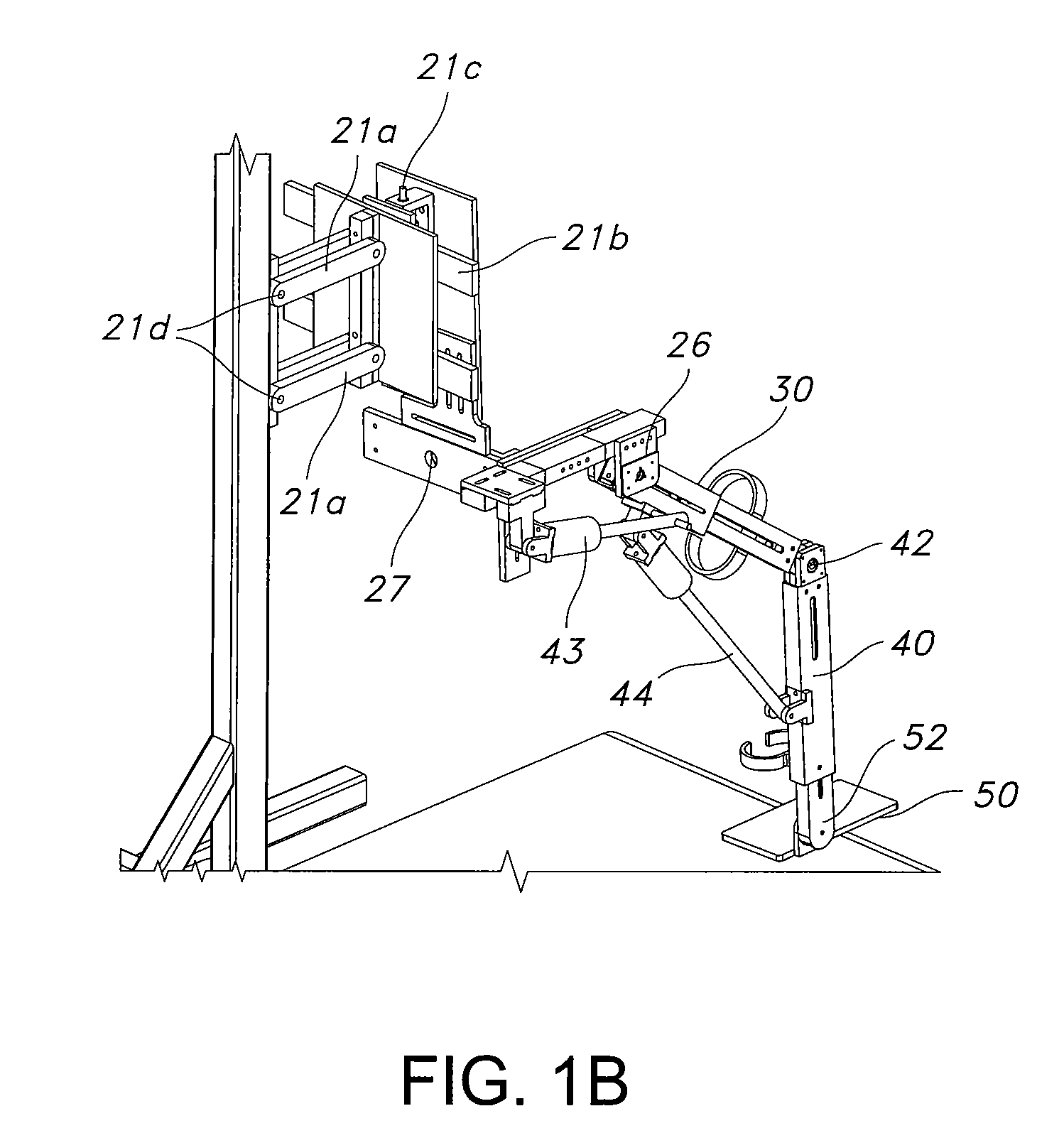Powered Orthosis
a technology of powered orthosis and power supply, which is applied in the field of powered orthosis, can solve the problems of significant muscle weakness or impairment in motor control, patients experiencing such injury often have substantial limitations in movement, and passive devices cannot supply energy to the leg
- Summary
- Abstract
- Description
- Claims
- Application Information
AI Technical Summary
Benefits of technology
Problems solved by technology
Method used
Image
Examples
Embodiment Construction
[0032]Referring now to the drawings, an exemplary powered leg orthosis is schematically illustrated in FIGS. 1A-1B. The exemplary orthosis is based upon the prototype passive Gravity Balancing Leg Orthosis described in the '729 application. The overall setup comprises frame 10, trunk 20, thigh segment 30, shank segment 40, and foot segment 50. Frame 10 takes the weight of the entire device. Trunk 20 is connected to the frame through a plurality of trunk joints 21a-21d having four degrees-of-freedom. These degrees-of-freedom are vertical translation provided by parallelogram mechanism 21a having revolute joints 21d, lateral translation via slider-block and slider-bar 21b, rotation about vertical axis V at revolute joint 21c, and rotation about horizontal axis H perpendicular to sagittal plane S at revolute joints 21d. User 22 is secured to trunk 20 of the orthosis with a hip brace 24.
[0033]Thigh segment 30 has two degrees-of-freedom with respect to trunk of the orthosis: translation ...
PUM
 Login to View More
Login to View More Abstract
Description
Claims
Application Information
 Login to View More
Login to View More - R&D
- Intellectual Property
- Life Sciences
- Materials
- Tech Scout
- Unparalleled Data Quality
- Higher Quality Content
- 60% Fewer Hallucinations
Browse by: Latest US Patents, China's latest patents, Technical Efficacy Thesaurus, Application Domain, Technology Topic, Popular Technical Reports.
© 2025 PatSnap. All rights reserved.Legal|Privacy policy|Modern Slavery Act Transparency Statement|Sitemap|About US| Contact US: help@patsnap.com



